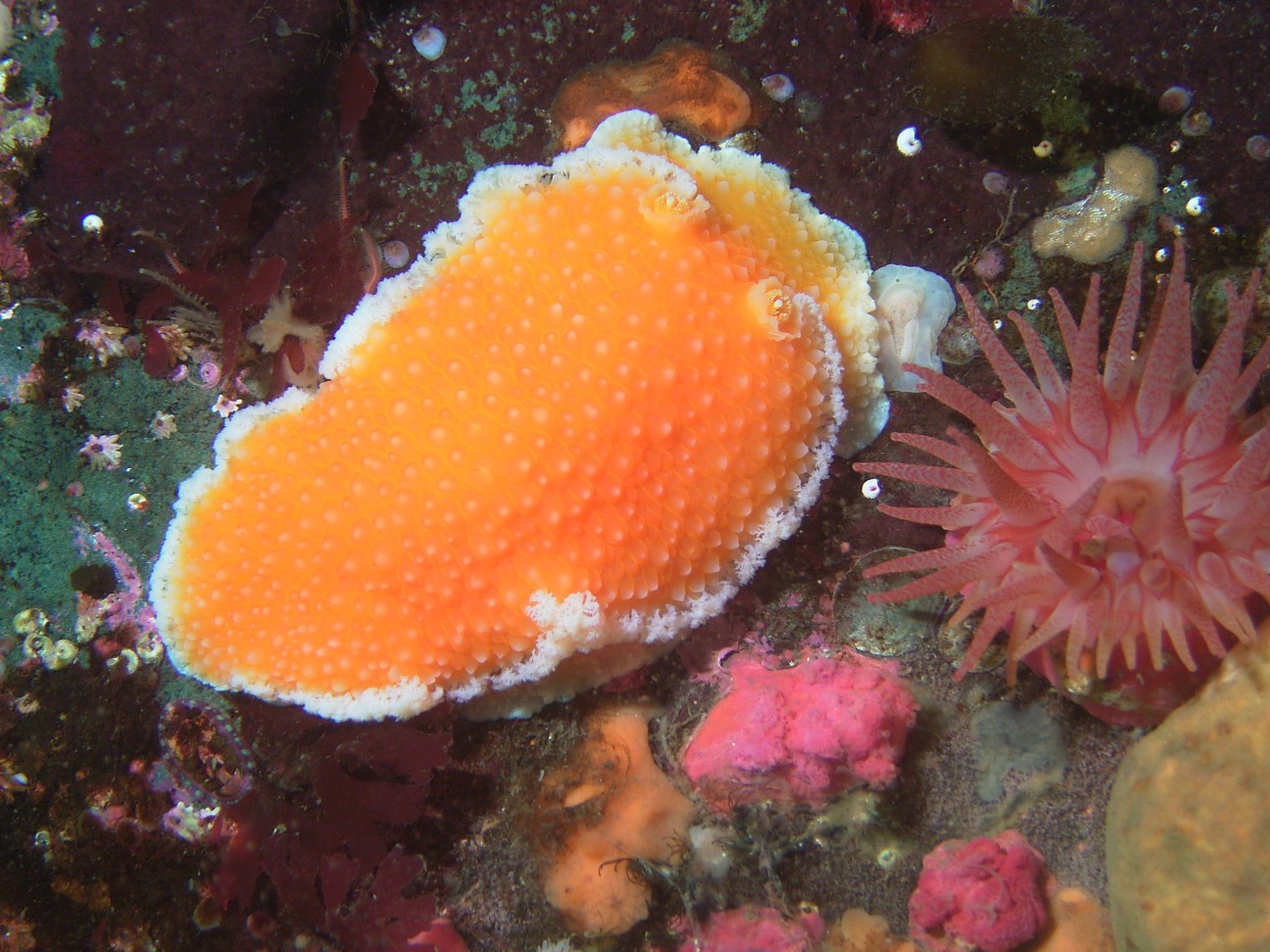How to Distinguish from Similar Species: The combination of orange color and white plumose gills around the margin is unique. Of the other orange opisthobranchs in our area,Berthellina engeli is smooth and has rolled rhinophores, Acanthodoris lutea has a circle of gills around the dorsal anus and has many papillae and yellow specks, Triopha maculata has a circle of gills around the dorsal anus and several orange dorsal processes, Aldisia sanguinea and Rostanga pulchra have a circle of gills around the dorsal anus and is 2 cm or less long, Anisodoris nobilis has a circle of gills around the dorsal anus and has black spots, and Dendrodoris fulva and Doriopsilla albopunctata have tubercles with white tips but have a circle of gills around the dorsal anus.
Geographical Range: Kuril Islands, USSR; Alaska to Malibu, CA
Depth Range: Subtidal to 363 m
Habitat: On rocks
Biology/Natural
History: This uncommon
species feeds on hydroids, sea pens such as Ptilosarcus
gurneyi, and other Alcyonaceans such as the soft
coral Gersemia
rubiformis (photo).
In the Kuril Islands (Russia) this species is
eaten raw or cooked as "Tochni". This species is said to be
the world's
largest nudibranch.
| Return to: | |||
| Main Page | Alphabetic Index | Systematic Index | Glossary |
References:
Dichotomous Keys:Kozloff 1987, 1996
Smith and Carlton, 1975
General References:
Behrens,
1991
Harbo,
1999
McDonald
and Nybakken, 1980
Morris
et al., 1980
Scientific
Articles:
Web sites:
General Notes and Observations: Locations, abundances, unusual behaviors:
This
larger view of the same individual as above shows pink patches of sea
strawberry, Gersemia
rubriformis, one of this species' preferred foods, around
the nudibranch.
The pink lumps beside the nudibranch may be Gersemia that the
animal has already grazed on.
The anemones present
are Cribrinopsis fernaldi
(pink striped tentacles, beside the nudibranch) and Metridium giganteum
(white, bottom of picture)
Photo by Jim Nestler, July
2005
Authors and Editors of Page:
Dave Cowles (2007): Created original page
CSS coding for page developed by Jonathan Cowles (2007)

